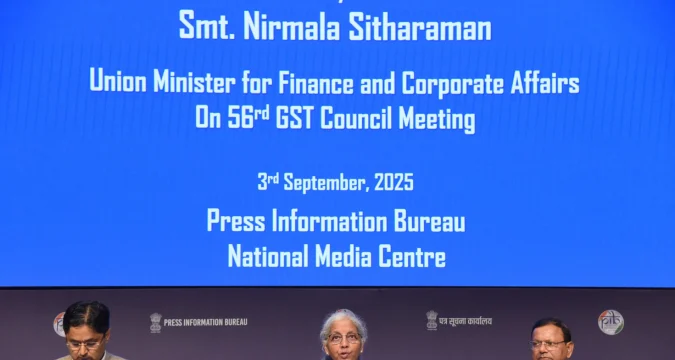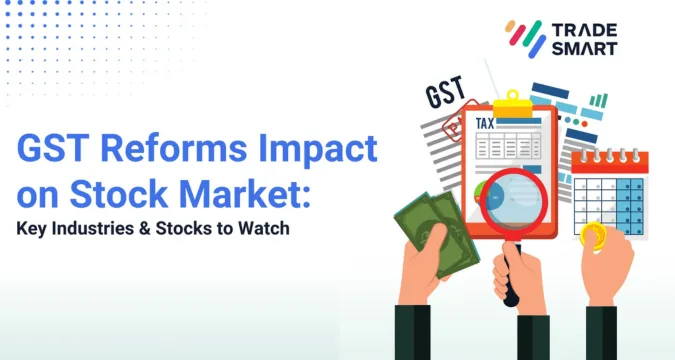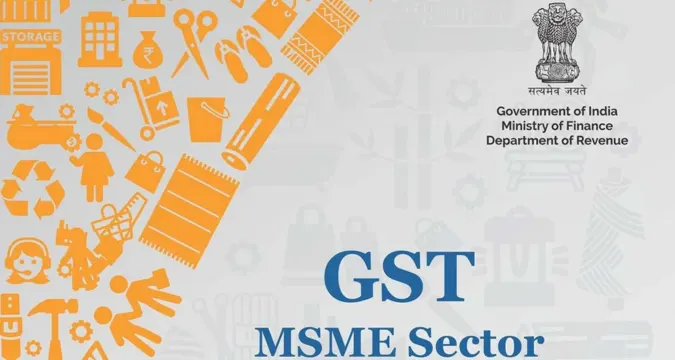India has reached once again a very vital junction point in its tax history. Adopted by a meeting of the 56th Goods and Services Tax (GST) Council under the chairmanship of Union Finance minister Nirmala Sitharaman, people are hailing it the biggest improvement to GST structure ever since it was introduced in 2017. India is converting to a two-rate GST system with special high rate on luxury and sin commodities, on September 22, 2025.

This ruling has raised hopes among the business communities, spurred a burst in the stock markets and provoked political actors. To ordinary citizens, this is all it takes: it is cheaper to buy everyday necessities, health care and insurance are affordable, and it is not that complicated to comply. To the policymakers though; the path of the way forward is one of even state revenues, driving investment upwards and a kind of peace under the federal level.
This paper delves into the GST changes in some detail– how they came into being, the new architecture, their effects on families, businesses, and states, and how taxation in India is a political economy.
The Journey of GST: From 2017 to 2025
Launched in July 2017, the Goods and Services Tax became hailed as the most ambitious indirect tax reform in India. A very broad range of central and state-level taxes, among which there were excise duty, service tax, VAT, octroi, and others was subsumed in a single tax system.
The original GST promise was threefold:
- One Nation, One Tax: to produce an easy flow national market.
- Ease of Doing Business: with less compliance and less tax controversy.
- Transparency to Consumers: through rationalization of rates and non-reliance on hidden taxes.
However, GST has usually been a messier reality. Various rate slabs were confusing (0%, 5%, 12%, 18 and 28). Businesses, and more so the MSMEs, had a hard time filing returns and handling refunds. Consumers discovered that rather than reducing prices, GST even increased them. States continually complained of losing fiscal independent action and wanted long-term reimbursement.
The Council has now tried to make good the original offer made by GST by simply stamping out the elaborate framework into two broad rates and a special sin tax.
The New Structure Explained
- Two Primary Slabs
5% GST Rate: Used on necessities and goods of importance. This includes:
- Simple food (bread, paratha, roti, cereals).
- Healthcare/education services.
- Farm inputs like fertilizers, seeds and farm implements.
- Home commodities such as hair oil, soaps and ice cream.

18% GST: The general slab of most goods and services. This gives the government a wide revenue base and moderate rates to the businesses.
- Special Rate of 40%
This is true of luxury and sin goods:
- Tobacco products.
- Large luxury cars and SUVs.
- Yachts, personal helicopters, and such high-end consumption.
The reasoning is straightforward: something used by the rich or that is unhealthy has to have an increased tax to support the poor.
- Complete Insurance Exemption.
Life insurance and health insurance are the first products to be fully tax free. This meets the long-standing middle-class demand, and reinforces the parallel agenda of the government to promote financial and health security.
Why Now? Timing the Reform Before Diwali
The move to enforce reforms well on the eve of Diwali, the most significant consumption season in India, did not happen by coincidence. Consumer demand is high every year before the festival season.

The cheaper television, cheaper foodstuffs, cheaper medical insurance, and cheaper agricultural inputs will trigger a boom in festive demand, benefiting the FMCG, retail, electronic, and e-commerce sectors.
Politically, the timing also echoes the policy of the ruling government to appear to be pro-middle class, pro-farmer, and pro-growth leading up to the 2026 state elections.
Industry Response: Optimism Across Sectors
The move has been generally approved by India Inc as a phenomenal milestone.
Director General of Confederation of Indian Industry (CII), Chandrajit Banerjee opined:
- The reforms allow families to breathe easier now and in the future once the rates on everyday goods and essential inputs are reduced which will help the economy to grow.
- FICCI celebrated the easing of refund processes, which exporters and MSMEs had been complaining about.
- ASSOCHAM observed that uniformity of GST slabs will minimize litigation, which is a significant burden on businesses and the taxation department.
The rationalization is a relief, especially to MSMEs. Fewer slabs will be easier to comply with, and conflicts with tax authorities will be minimal. This will enhance the Ease of Doing Business rating of India, which is one of the factors observed keenly by international investors.
Impact on Families and Consumers
To an ordinary Indian family, GST changes represent apparent savings in consumer lifestyles every month.
- Food & Groceries: Low rates on foodstuffs means small kitchen expenses.
- Healthcare: GST free health insurance, better medicines with lower input cost.
- Education: A reduction in the tax on the private schools and coaching institutions will render education affordable.
- Consumer Goods: A reduction in price will apply to products in household, electronic, and personal care categories.
Consumer confidence and their expenditure habits could be enhanced by the psychological influence of cheaper commodities particularly around the festive season.
Stock Markets: The “GST Bonanza Rally”
Markets received it very enthusiastically:

- Sensex rose by almost 889 points to 81,456.67.
- Nifty went up by 265 to 24,980.75 near the psychological 25,000.
Shareholders are placing bets on two short-term impacts:
- Consumption increases: when the lower tax rates cause goods to be less expensive.
- Corporate relief: because compliance costs decrease and litigation risks decrease.
Brokerage houses already are updating their expectations on an increase in the short future outlook of FMCG, insurance, and auto industries.
The Political Economy of GST: Criticism from the Opposition
The reforms have been criticized by the opposition led by the Congress Party as partial reforms.
Congress leader Jairam Ramesh called the move GST 1.5 but not GST 2.0, and he claimed that:
The most important question of state compensation has not been mentioned. States had already insisted on the extension of compensation to another five years as a means of insuring revenues.
In its absence, the federal tensions may increase, in particular, to the states deeply relying on the GST payment.
The measures can help relax the requirements but would not ensure an increase in individual investment.
The issue inherent in this objection is that, despite the fact that the Centre is enjoying the political payoff of declaring itself consumer-friendly in terms of reform, the states themselves are quite nervous about the fiscal autonomy and reliability of the revenues.
Global Lessons: How India Compares
The GST experience in India has many times been juxtaposed with international patterns:
- Australia and Canada have fewer slabs and a high level of compliance in their GST/VAT systems.
- The countries in the European Union generally have either one or two common VAT rates that are partly exempted.
- The previous design that used several slabs (five or more) was deemed to be too complicated in India.
With the transition to a two-rate structure, India approaches international best practices. But the 40% sin rate is very high compared to the rest of the world, a signal of how India is strict regarding luxury consumption and prevention of health of the people.
Challenges Ahead
Even though there is optimism, some challenges still exist:
- Implementation Hurdles: Firms have to revise accounting software, invoicing software, and pricing models in a few weeks.
- Revenue Neutrality: The government should be careful not to harm total revenue collection by reducing the rate on necessities.
- State Compensation Issue: In the absence of extending compensation, issues of tension between Centre and states may arise once more, which may undermine cooperative federalism.
- Compliance Behavior: Although simplification can work, evasion risk will not go away unless the enforcement is increased.
Broader Economic Implications
- Increase to Consumption-Led Growth.
Reduced tax on essentials and household purchases would result in higher disposable income that will sustain consumption based industries.

- The assistance to MSMEs and Startups.
Minimized slabs are simpler to comply with and are good motivation to an entrepreneur to get started.
- Health and Insurance Penetration.
Having no GST on insurance, a greater number of families will be able to invest in life and health insurance, which will increase the financial stability of India.
- Formalization of Economy
The tax net can continue to get larger, as more businesses shift to the formal sector, which offers an increased compliance ease.
A Step Toward “True GST 2.0”?
Economists have referred to a tax system which is uniform, predictable, and federal-friendly as the GST 2.0.
The ongoing reforms are taking India nearer to that vision although it has not made it all-the-way. There is still a loophole in not stating petroleum, electricity, and real estate under GST. Tensions between states about compensation are also yet to be resolved.
The reform of September 2025 can therefore be considered a bridge reform – a transition to GST 1.0 in a more complex form on its way to the eventual potential of a simpler GST 2.0.
A Turning Point with Caution
The September 2025 GST reforms are an ambitious effort to achieve the initial purpose of One nation, One tax. To the families, the changes would mean affordable prices of basic needs, health and a lighter burden on the pocket. To businesses, and in particular, MSMEs, simplification comes as a relief to compliance headaches. To investors, the stock market boom no longer portrays doubt in the economic path of India.
However, despite all this promise, there is one more question regarding the reform: Will revenues be stable? Will the demands of states that have to receive compensation be answered? Will India at last switch to a common, globally comparable GST?
Since the new system will come into effect on September 22, its true trial will not be in the headlines it produces today but in the experience of citizens, businesses, and states in the coming months.
In the meantime, the message is simple: the tax pathway of India has reached a new stage, the one joining the happiness of an ordinary citizen with the aspiration of a modern, simplified, and economy-oriented regime.








